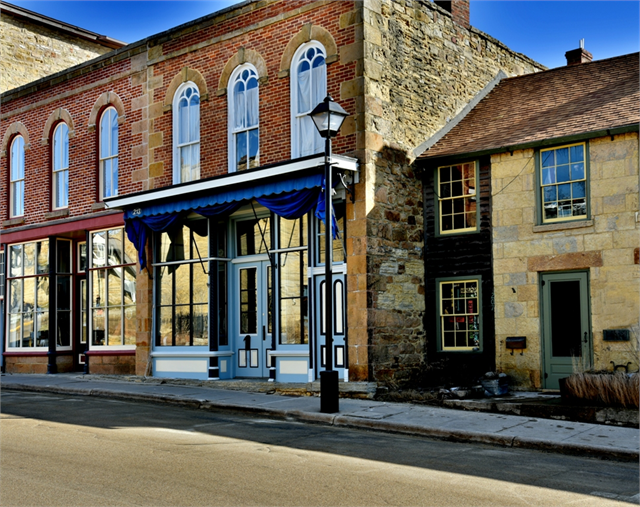Wisconsin Historic Preservation Month Poster Celebrates Mineral Point

Downtown Mineral Point, 2016
Mineral Point was the first community in Wisconsin to have an historic district listed in the National Register of Historic Places in 1971. Image courtesy of Philip Mrozinski/M.STUDIO
This year we celebrate fifty years of the National Historic Preservation Act and the creation of the National Register of Historic Places. In 1971, Mineral Point became the first community in Wisconsin to have a historic district listed in the National Register of Historic Places. Today, the historic character of the district is preserved and the thriving downtown attracts residents, business owners, and tourists to the community.
European settlers began arriving in Mineral Point as early as 1827, however, the discovery of rich lead deposits resulted in the community’s initial growth and expansion. The mining operations attracted experienced Cornish miners, who made up half of the population by mid-century. Mineral Point’s characteristic stone cottages and stone faced downtown buildings reflect the transfer of building techniques from Cornwall to Wisconsin as seen in the careful tooling and fitting of the stone on building facades.
Zinc mining and processing supplanted the lead industry by the late nineteenth century, and continued as the predominant Mineral Point industry until the 1920s. New buildings were constructed during this era, most reflecting the prominent styles of the period, including Italianate, Queen Anne, and American Foursquare.
In addition to its intact historic commercial core, the Mineral Point district contains many notable buildings, including the Italianate style Gundry Home (Orchard Lawn) built in 1868, the 1913-1914 city hall and opera house designed by the architectural firm of Claude and Stark, as well as the state historic site Pendarvis which consists of a collection of restored miners’ cottages.
Learn More
National Historic Preservation Act 50th Anniversary in Wisconsin
National Historic Preservation Act 50th Anniversary Photo Contest
Have Questions?
Contact Amy Wyatt by phone at 608-264-6506 or by email below:
